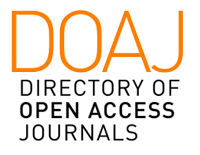[GW28-e0063]
Predictors of TAVI-associated bleeding and its impact on short-term mortality
Jiayang Wang1 2 Yujie Zhou3
1.Department of Cardiac Surgery Beijing An Zhen Hospital Capital Medical University, Beijing 100029, China
2.Center for Cardiac Intensive Care Beijing An Zhen Hospital Capital Medical University, Beijing 100029, China
3.Department of Cardiology Beijing An Zhen Hospital Capital Medical University, Beijing 100029, China
Objectives: Background: This study aimed to investigate the impact of post-Transcatheter Aortic Valve Implantation (TAVI) bleeding according to the bleeding definition from the Valve Academic Research Consortium-2 (VARC-2) criteria on 30-day postoperative mortality and to examine the correlation between pre- or intra-operative variables and the bleeding.
Methods: This systematic review and meta-analysis were conducted and reported in adherence to the Preferred Reporting Items for Systematic Reviews and Meta-Analyses (PRISMA). Multiple electronic literature databases were searched using predefined criteria, with bleeding defined per VARC-2 criteria. A total of 10 eligible articles with 3,602 patients were included in the meta-analysis. Differences are expressed as odds risk (OR) with 95% confidential interval (CI). Study heterogeneity was tested using the I2 statistic. Study heterogeneity was considered significant when P values < 0.10 or I2 > 50%. A fixed-effects model was used when study heterogeneity was not significant; a random effects model was used when study heterogeneity was significant. Egger’s linear regression test was used to estimate publication bias. Meta-regression analysis was performed to examine whether covariates, which could be potential modifiers, can affect the end results of the meta-analysis.
Results: The meta-analysis revealed that post-TAVI bleeding was associated with a 323% increase in 30-day postoperative mortality (OR: 4.23, 95%CI: 2.80-6.40, p<0.0001) without significant study heterogeneity and publication bias. Subgroup analysis found that the patients with major bleeding/life-threatening bleeding showed 410% increase in the mortality compared with the patients without bleeding (OR:5.10, 95%CI: 3.17-8.19, p<0.0001). Transapical access was associated with a significant 83% increase in the incidence of bleeding compared with transfermoral access (OR: 1.83, 95%CI: 1.43-2.33, p<0.0001). Multiple logistic regression analysis revealed that atrial fibrillation (AF) independently correlated with TAVI-associated bleeding (OR: 2.63, 95% CI: 1.33-5.21, P=0.005). The potential modifiers, such as STS Score, mortality, the logistic EuroSCORE, aortic valve area, mean pressure gradient, LVEF, preoperative hemoglobin and platelet levels, and study design had no effects on the end results of the meta-analysis.
Conclusions: To the best of our knowledge, this is the first meta-analysis to use the VARC-2 definitions to investigate the effect of TAVI-associated bleeding on 30-day postoperative mortality and to comprehensively examine the association between prior intraprocedural variables and post-TAVI bleeding. Our key findings are: (1) post-TAVI bleeding, in particular major bleeding or LTB, was associated with a significant increase in 30-day postoperative mortality; (2) TA access significantly increased the incidence of post-TAVI bleeding; and (3) preexisting AF independently correlated with post-TAVI bleeding. Recognition of the importance and determinants of post-TAVI bleeding should lead to strategies to improve outcomes














